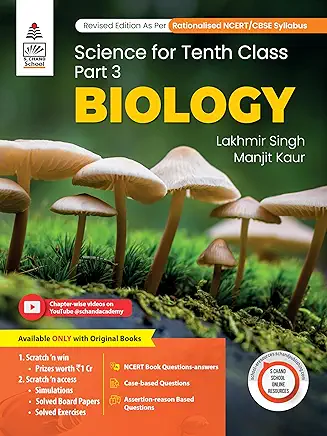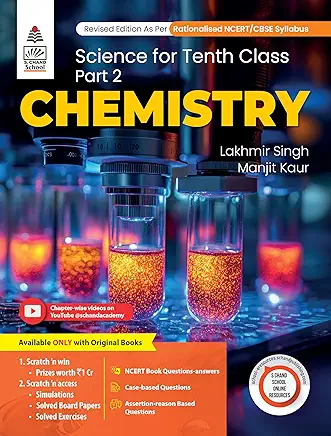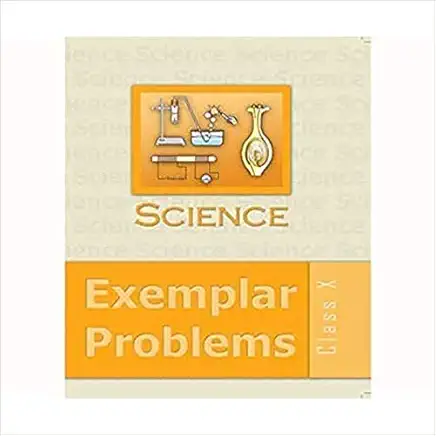CBSE Class 10 Biology: Our Environment - Part 6: Case Study
Welcome to Part 6 of our 8-part series on Our Environment. This post features Case Study Based Questions. These questions require you to read a passage and apply your knowledge to answer the related sub-questions.
Recommended Books for Deep Practice
Top 6 Case Study Questions - Our Environment
Case Study 1: The Ozone Shield
The ozone layer is a protective shield in the Earth's stratosphere that absorbs most of the Sun's harmful ultraviolet (UV) radiation. In the 1980s, scientists discovered a significant thinning of this layer, especially over Antarctica, commonly called the "ozone hole." This depletion was linked to the release of man-made chemicals, particularly chlorofluorocarbons (CFCs), used in refrigerants and aerosol sprays. These chemicals are non-reactive in the lower atmosphere but are broken down by UV radiation in the stratosphere, releasing chlorine atoms that catalytically destroy ozone. This led to the signing of the Montreal Protocol in 1987, an international treaty to phase out these substances. Increased UV radiation can cause skin cancer, cataracts, and harm plant life.
Case 1: Question (a)
What is the primary function of the ozone layer?
Case 1: Question (b)
Which class of man-made chemicals is mainly responsible for ozone depletion?
Case 1: Question (c)
List one harmful effect of increased UV radiation on humans.
Case 1: Question (d)
What international treaty was signed to address this problem?
Case Study 2: The Flow of Energy
Energy flows unidirectionally in an ecosystem, from the sun to producers and then to consumers. Producers (like plants) capture only about 1% of the solar energy. From there, the energy is passed down the food chain. A "10% law" governs this transfer, stating that only about 10% of the energy from one trophic level is incorporated into the next. The remaining 90% is lost to the environment as heat during metabolic processes. This massive loss of energy at each step limits the length of food chains, as very little energy is left for the organisms at the top.
Case 2: Question (a)
What percentage of solar energy is captured by producers?
Case 2: Question (b)
If producers have 5,000 J of energy, how much energy will be available to secondary consumers (T3)?
- Energy at T1 (Producers) = 5,000 J
- Energy at T2 (Primary Consumers) = 10% of 5,000 J = 500 J
- Energy at T3 (Secondary Consumers) = 10% of 500 J = 50 J
Case 2: Question (c)
What happens to the 90% of energy that is not transferred between trophic levels?
Case 2: Question (d)
Why does this energy loss limit the length of food chains?
Case Study 3: The Silent Toxin
To protect crops from pests, farmers often spray non-biodegradable pesticides like DDT. These chemicals are washed down into the soil and water bodies. In a nearby lake, these chemicals are absorbed by algae (producers). When small fish eat the algae, the DDT is not broken down but accumulates in their fat tissues. When larger fish eat the small fish, this accumulated DDT is transferred to them. Finally, fish-eating birds (like eagles) consume the large fish. This phenomenon, known as biomagnification, results in the highest concentration of the toxin at the top of the food chain, often leading to diseases and reproductive failure in top consumers.
Case 3: Question (a)
What is the phenomenon described in the passage called?
Case 3: Question (b)
In the food chain (Algae -> Small Fish -> Large Fish -> Bird), which organism will have the highest concentration of DDT?
Case 3: Question (c)
Why do these chemicals (like DDT) accumulate instead of being broken down?
Case 3: Question (d)
How does this phenomenon affect organisms like fish-eating birds?
Case Study 4: The Garbage Problem
A city generates a large amount of household waste every day. This waste includes kitchen scraps (vegetable peels, leftover food), paper, plastic wrappers, glass bottles, and metal cans. The municipal corporation is struggling to manage this waste, which is currently being dumped in a large open area (landfill) on the outskirts of the city. This landfill is causing soil and water pollution and has become a breeding ground for flies and rats, leading to the spread of diseases. A student suggests that the first step to solving this problem is to segregate the waste at its source.
Case 4: Question (a)
From the passage, identify one biodegradable waste and one non-biodegradable waste.
Case 4: Question (b)
List two problems caused by the current method of disposal (landfill).
Case 4: Question (c)
How would segregating waste help in its disposal?
Case 4: Question (d)
What is the best method of the "3 Rs" (Reduce, Reuse, Recycle) to minimize waste generation in the first place?
Case Study 5: The Recyclers of Nature
In an ecosystem, energy flow is unidirectional, but the flow of nutrients is cyclic. When plants and animals die, their bodies contain complex organic compounds. If these bodies were not broken down, the nutrients would be locked up forever, and the soil would become barren. This crucial role is performed by microorganisms like bacteria and fungi, known as decomposers. They break down the dead organic matter and animal waste into simple inorganic substances, which are then returned to the soil. These nutrients are re-absorbed by plants, completing the cycle and allowing the ecosystem to sustain itself.
Case 5: Question (a)
What is the collective term for microorganisms like bacteria and fungi that break down dead matter?
Case 5: Question (b)
How does the flow of nutrients differ from the flow of energy?
Case 5: Question (c)
What is the main function of decomposers in the nutrient cycle?
Case 5: Question (d)
What would happen to the soil if decomposers were absent?
Related Posts
Case Study 6: The Aquarium
Rohan sets up a fish aquarium. He buys fish, some aquatic plants, and gravel. He sets up a light source and an aerator (oxygen pump). For the first few weeks, everything seems fine. But after a while, he notices that if he forgets to clean the tank, the water becomes cloudy, and the fish seem stressed. He also has to provide fish food regularly. He learns that his aquarium is an artificial ecosystem, which is different from a natural pond ecosystem that can clean itself.
Case 6: Question (a)
Identify one producer and one consumer from Rohan's aquarium.
Case 6: Question (b)
List two abiotic components of this aquarium.
Case 6: Question (c)
Why does the aquarium need an aerator (oxygen pump), while a natural pond does not?
Case 6: Question (d)
Why does the aquarium tank need to be cleaned, unlike a natural pond?
Case 6: Question (e)
What is the difference between this artificial ecosystem and a natural ecosystem?






